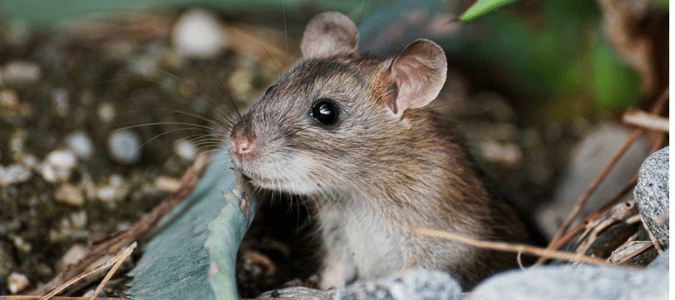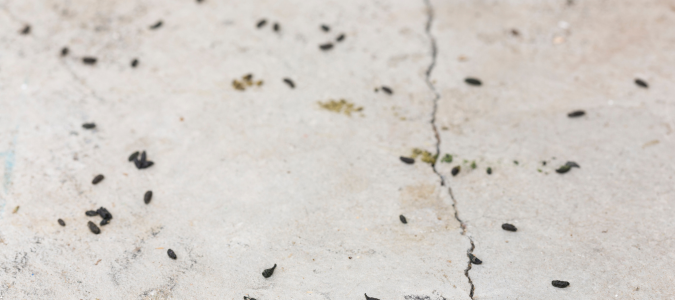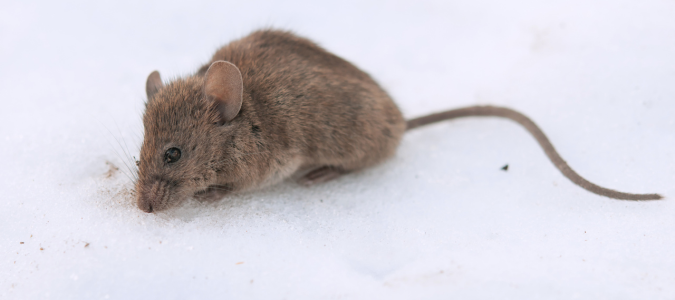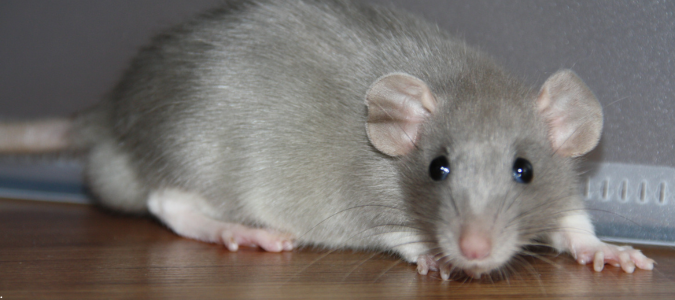A rodent infestation is often a homeowner’s worst nightmare. Since rodents are sneaky creatures that stay out of sight, it can be difficult to identify exactly what kind of infestation you’re dealing with.
If you’re dealing with a rodent situation, don’t hesitate to enlist the help of a professional pest control service. The expert can control the population and put prevention methods in place to help deter rats and mice from returning.
Rats Versus Mice: Which Pest Is Invading Your Home?
Do you have rodents in your home but can’t identify what kind? Rats and mice, pictured above, leave behind several of the same signs that they’ve taken up residence in your home, and it can become a guessing game until you actually see a rat or mouse.
However, both mice and rats are nocturnal creatures and are excellent at staying out of sight. It’s helpful for homeowners to learn how to distinguish between a rat and a mouse infestation, so they can identify which pest is invading their homes. Some of the ways you can differentiate these pests include:
- Size and appearance
- Behavior
- Nesting habits
- Diet
Let’s dive into each of these a bit more.
Size and Appearance
The biggest difference between rats and mice is their size. Rats are generally larger than mice. Some rat species, such as Norway rats, grow up to nine inches long, excluding their tails. Rats also have thicker bodies than mice, and their tails, which are thick, are shorter than their bodies.
Mice, on the other hand, usually measure between two and a half and four inches long, excluding their tails. They have slender bodies, and their tails are typically the same length as their bodies. Their tails are long, slender and covered in fur.
When it comes to facial features, rats have blunt noses and small ears. Mice are known for having large ears and tiny eyes.
Behavior
While both rats, pictured above, and mice are nocturnal animals, they have their own distinctive set of behaviors. For example, mice are very curious creatures that love to explore new environments.
Rats avoid new objects as a safety precaution. At the same time, rats travel farther from their nests than mice do. Mice tend to stay within 10 to 30 feet of their nests, while rats travel up to 100 feet or more away from their nests. Although they travel farther, rats are more methodical in their movements than mice. After seeing them move, many homeowners wonder if rats have bones.
Mice are agile creatures. They’re skilled at climbing and squeezing into tiny spaces through holes the size of a quarter. On the other hand, most Norway rats stay close to the ground or burrow underground. However, roof rats are more similar to mice in that they are avid climbers and build nests in elevated areas. Roof rats can squeeze through holes the size of a quarter.
Nesting Habits
Most rat species build large, robust nests that are close to the ground. Depending on the species, they may build nests underground, beneath concrete slabs or along the foundation of a home. Roof rats are one of the few rat species that prefer to build their nests above ground in attics or trees.
Mice nests are smaller than rat nests, and they’re made out of shredded paper, insulation or fabric. Rats build their nest close to their food source so that adult rats can bring back food to their young. Since rats reproduce rapidly, finding the correct nest placement is a major priority for them.
Diet
Rats like to eat anything they can access, such as meat, grains, pet food and trash. They’re known for eating a large amount of food in one sitting. They have strong teeth and will gnaw through wood, plastic and even wires to access their food source.
Mice are known to nibble their food in small portions rather than consume it all at once. They prefer grains, seeds and sweet foods. A pile of crumbs is a feast for mice.
Signs of Rats and Mice
Despite their differences, rats and mice often leave behind the same signs to let you know they’re in your home. For example, spotting mice or rat droppings is often the first indicator. Gnaw marks are also common, and rat gnaw marks are larger than mouse gnaw marks.
Next, both rats and mice leave behind grease marks from their fur. They look like oily smudges along your baseboards or walls.
You’ll likely hear rats and mice before you see them. As they move throughout your home, especially at night, you’ll hear them scurry in your walls or attic.
If you notice any of these signs of rats or mice in your home, contact a pest control specialist. Do not wait to see a rodent to take action, as these pests reproduce rapidly and can quickly become a major annoyance.
Rats Versus Mouse Droppings
Rodent droppings are one of the first signs of a rat or mouse infestation. Understanding the difference between rat and mouse droppings, pictured above, can help you determine what you’re dealing with before you actually see a rodent.
There are two main things that distinguish rat and mouse droppings: their size and shape. Rat droppings are around one-half to three-fourths of an inch long, and they have a capsule shape with either round or blunt ends.
Mouse droppings are smaller, measuring around one-eighth to one-fourth of an inch long, and are shaped like grains of black rice.
Both rat and mouse droppings are either dark brown or black, but rat droppings are shiny when they’re fresh. Mice produce more droppings than rats do, and they’re often scattered around randomly. Rat droppings are typically found in clusters.
Are You More Likely to Have Mice or Rats?
In Texas, you’re more likely to have rats, more specifically, roof rats. That said, you may encounter house mice, Norway rats and roof rats.
House Mice Identification
House mice are small rodents that measure between two and a half to four inches long, excluding their tails, and they have light brown to gray fur. These pests can fit through small openings, and they’re excellent climbers. They most often nest in walls, pantries and attics.
Norway Rat Identification
Norway rats measure between seven to nine inches long, excluding their tails, and they have brown or gray fur. They’re also known for their blunt noses. Norway rats are burrowers, which is why you’ll most likely find them in basements or crawl spaces.
Roof Rat Identification
Roof rats, also known as black rats, measure between six and eight inches long, excluding their tails. Their fur is dark brown or black, and they have pointed noses. Roof rats get their name from their climbing abilities, and you’re most likely to find them in your attic, roof rafters and ceilings.
If you suspect that any one of these common rodents is taking up residence in your home, reach out to a pest control service.
What are Rats Doing When You Hear Scratching?
A tell-tale sign of a rat infestation is hearing them move inside your walls, attic or roof. Rat movement sounds like scratching because they use their claws to scurry through ceilings and floors.
Rats, pictured above, are nocturnal animals, so you’ll hear scratching noises the most after the sun has gone down. It’s also easier to hear it at night when the house is quiet.
In addition to moving through your walls, the scratching noises could be from the rats nesting or gnawing. Rats have sharp teeth and are known for gnawing on wires, which can cause damage to your home.
If you hear strange scratching noises in your walls, don’t hesitate to contact a pest control service. They can inspect your home to identify the infestation and take steps to remove it.
Identify Your Rodent Infestation With Professional Help
If you aren’t sure whether you have a rat or mouse infestation in your home, reach out to a local pest control company. They can find the rodent’s nest and identify the species. Along with controlling the population, they can also find the entry points that the mice or rats use to get into your home.
ABC Can Help With Rodent Problems
It can feel frustrating when rats or mice infest your property. Instead of spending your time trying to get rid of rodents on your own, contact ABC Home & Commercial Services. Our experts will be able to control the rodents on your property. We will create a custom pest treatment plan, so you don’t have to worry about these creatures.





